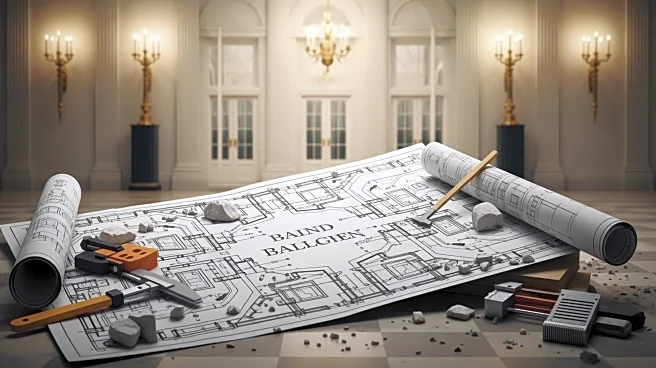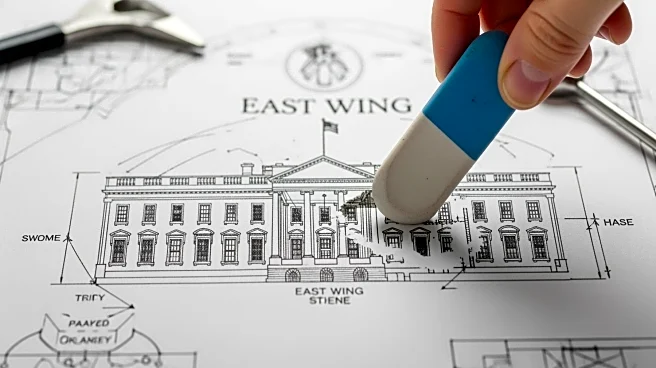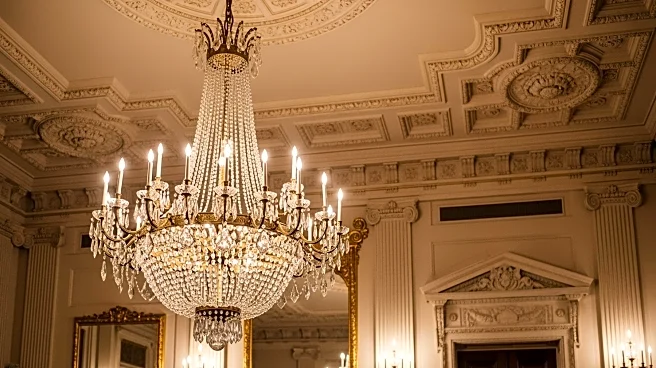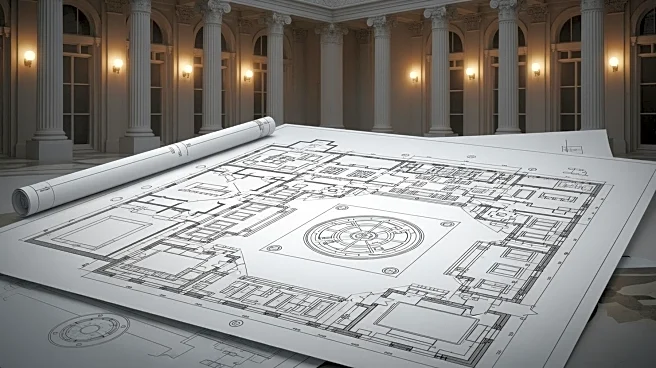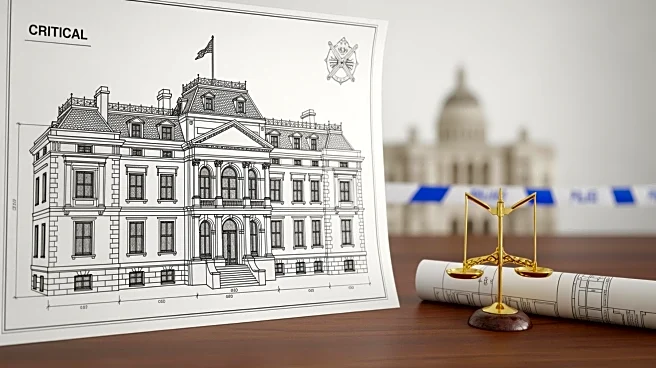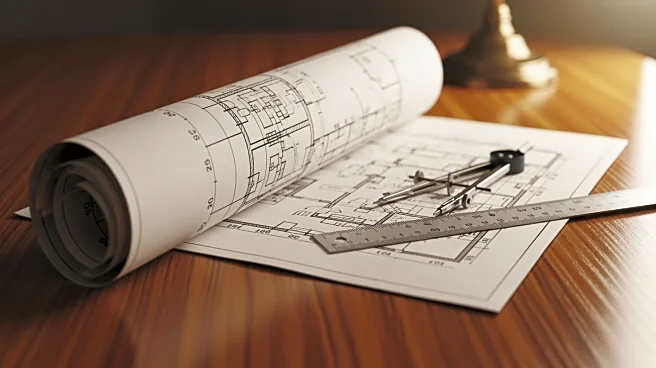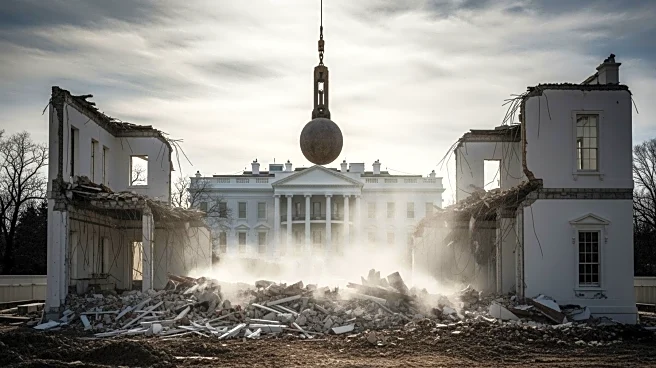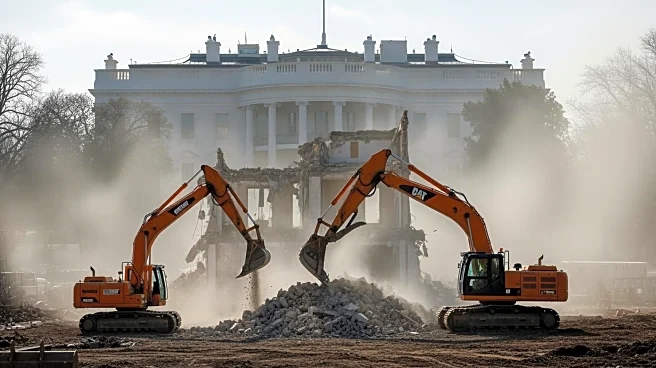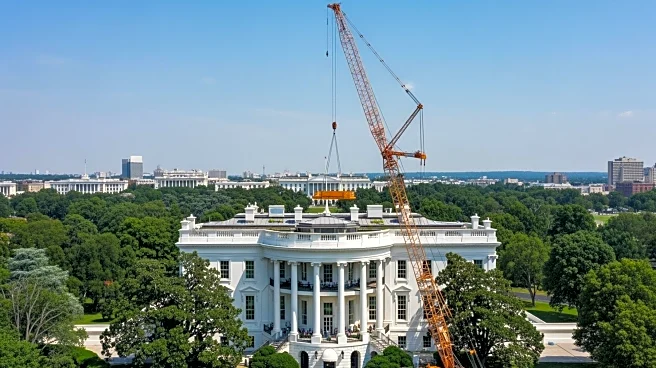What's Happening?
President Trump has initiated the demolition of the East Wing of the White House as part of a ballroom construction project. This development involves tearing down several offices, including those of First
Lady Melania Trump and other workspaces. The East Wing, originally built in 1902 and renovated in 1942, is undergoing reconstruction. The demolition affects the White House visitors' office, the Office of Legislative Affairs, and the White House Military Office, which are responsible for organizing transportation, food service, and hospitality functions. The project, funded by private donors, is estimated to cost $250 million and is expected to be completed before the end of President Trump's term.
Why It's Important?
The demolition of the East Wing signifies a significant alteration to the White House's infrastructure, impacting various offices and functions. This modernization project, described by President Trump as separate from the historic residence, aims to enhance the facility's aesthetic and functional aspects. The move has implications for the operations of the White House, affecting public tours, legislative affairs, and military office functions. The funding by private donors highlights the intersection of private contributions in public projects, raising questions about the influence and role of private entities in government infrastructure.
What's Next?
As the demolition progresses, staff from affected offices have relocated to other parts of the White House campus, including the Eisenhower Executive Office Building. The completion of the ballroom is anticipated before the end of President Trump's term, potentially altering the landscape of White House events and receptions. The project may prompt discussions among political leaders and civil society regarding the preservation of historical sites versus modernization needs.
Beyond the Headlines
The decision to demolish part of the White House for a ballroom project raises ethical and cultural considerations about maintaining historical integrity versus modernization. The involvement of private donors in funding such a significant project may lead to debates on transparency and the influence of private wealth in public affairs. Long-term, this development could set precedents for future renovations and private-public partnerships in government projects.
